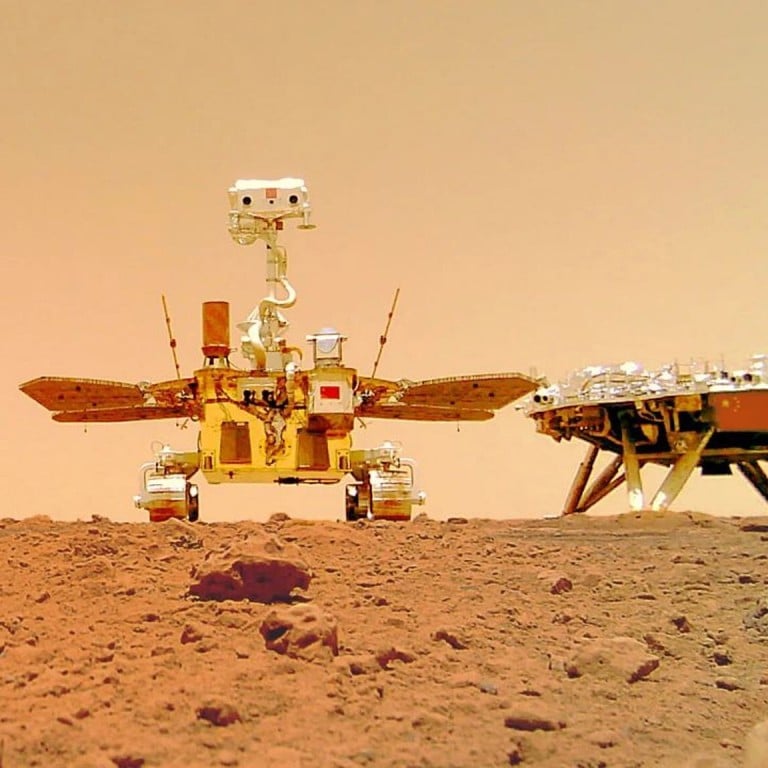
Europe’s Mars orbiter to read the signals in ‘blind’ dates with China’s rover
- The Chinese probe Zhu Rong will use Europe’s Mars Express to send data to Earth in series of communication tests
- Held in five time windows, the tests will be ‘blind’ because the two spacecraft use incompatible frequencies
These communications will be “blind”, given that the Zhu Rong cannot detect the Mars Express – which has been circling Mars in orbit since 2003 – because of incompatible frequencies.
“This is also a chance for the Mars Express team to test a backup method for communicating with Mars landers, designed over a decade ago but never before tested live in orbit,” the ESA said.

01:06
First video from China’s Mars rover Zhu Rong shows descent and exploration
The five communications are scheduled for November 7, 16, 18, 20 and 22, as the Mars Express flies over the Utopia Planitia on the Mars surface, where Zhu Rong is based. Each session between the two will last about 10 minutes, and the timings were chosen by the Zhu Rong team, the ESA said.
When the ESA orbiter flies over the Chinese rover, it is programmed to send down a “hello” signal to initiate communication. The Zhu Rong will not be able to receive this because of the different radio systems, but it can send up its signal in the scheduled time windows in a frequency the Mars Express’ radio system can collect.
With the orbiter being a much more powerful transmitter, it can forward the received data to be received on Earth by the ESA’s large antennas. The agency’s operations centre in Germany will relay it to the Zhu Rong team in China.
The transmission tests will start at a relatively slow eight kilobytes per second, before being gradually increased to 128kB per second over the remaining tests. A whole data transmission process from the orbiter to Earth will take about two hours.
So far, the Zhu Rong has been using the Tianwen-1 orbiter with which it arrived as its relay station, but the CNSA exchanged data with the ESA during the Tianwen-1’s journey to Mars.
China has said that it would like to increase international cooperation in its space programmes and Europe is a key partner.
China lands Zhu Rong Mars rover after ‘nine minutes of terror’
“During the Tianwen-1 mission, CNSA and four foreign space agencies, including the ESA, [French space agency] CNES, [Argentina’s] CONAE and the Austrian Research Promotion Agency, have cooperated extensively,” the CNSA said earlier this year.
“When planning our next space programmes, whether it is the fourth phase of the lunar exploration project or asteroid exploration, including the recently known international lunar research station, we are adhering to an open attitude and are cooperating extensively with our international counterparts.”

